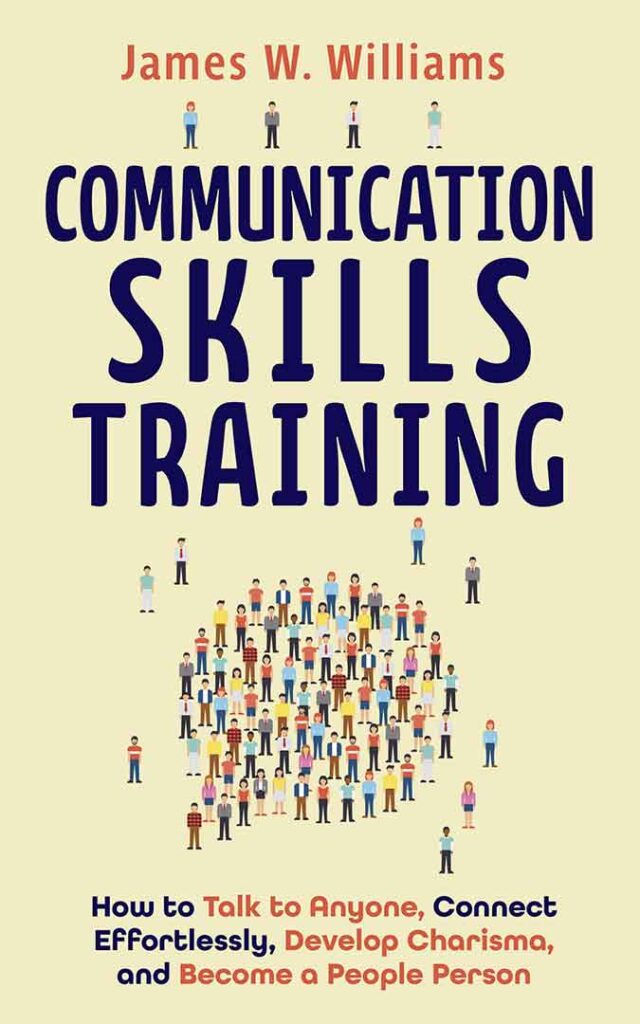If you’ve been wondering how to avoid awkward silences whenever you’re in a group, both familiar and new, then you’ve come to the right place.
We understand that it is evident that learning how to avoid uncomfortable silences during conversations is essential.
We’ve all been there – put on the spot at a social event where we were drawn into a conversation then coming to an uncomfortable pause. It will seem alarming, but you can move past it and keep the conversation going. In fact, you’ll be surprised how easy it actually is.
With that, I’ve prepared some handy but practical tips that you can incorporate into your interactions to avoid those awkward silences.

9 Steps to Follow to Avoid Awkward Silences
So without further ado, we’ll walk you through 9 simple steps that will help you avoid the awkward encounters and feel more at ease.
1. Silence Is Not the Enemy
Most of us have the idea that conversations are spontaneous, continuous, and dynamic. Well, that is not always the case. When an uncomfortable pause occurs, the other person may be panicking as well.
It may seem as if the other person is waiting on you to speak first. Also, they may be contemplating how uncomfortable you are. However, it’s best if we believe that this awkward silence is not anyone’s fault.
You are not alone in blaming yourself. The other person might also be going blank. They may have too-brief responses or even follow-up with a better answer. This pause may be making both of us feel like we’re at a loss on how to continue the conversation.
The next time an uncomfortable pause occurs, Arthur Martine has a bit of wisdom we can apply. When we can preserve our silence, we can utilize our words better to shine and please others in discourse. With that said, those who cannot keep their silence should not have spoken at all.
As such, there is almost an eloquence in silence. When we try to understand what the other person is saying, we tend to keep quiet. Because of this, there is no need to feel daunted with a bit of quiet time.
2. Give More Than the Bare Minimum
When we are self-conscious, we suppress our thoughts and feelings. This gives us the appearance of being quiet and rigid. If the conversation has already begun, do your part. Not only is it respectful, but it also gives the other person the idea that you like talking to them.
If we have the bare minimum responses, such as “yes” or “no,” it becomes difficult for others the conversation interesting. It compels them to carry out all of the conversation’s imaginative work. Additionally, if we do not contribute, it will seem as though we are unwilling to talk.
To maintain a discussion, the other party needs feedback from us to connect. The more information you respond with, the more likely they are to relate or pose an insightful follow-up query.
Giving more than the bare minimum can do wonders for your conversations. It will also allow you to avoid uncomfortable silences and keep the conversation going.
3. Ask Open-Ended Questions
Keeping the previous tip in mind, this can also apply if it’s your turn to ask the question. Open questions cannot be answered categorically with a yes or no; they require some clarification. The opposite applies to a closed question, which has a single correct answer.
Asking open-ended questions can be an excellent way to maintain a dialogue and elicit more exciting responses.
It can even be a fun way to learn about a person’s thoughts. In this way, both of you can share views on a variety of subjects.
4. Do Follow-Ups
It’s normal for people to discuss their interests. In fact, you may almost always ask someone to elaborate on a topic or describe something in greater detail. Doing so is an excellent way to break up uncomfortable silences.
To effectively eliminate awkward silences, you must first eliminate any self-doubt. Self-doubt and anxiety often result in awkward silences and a lack of topics to discuss.
When you’re socializing, you don’t have time to “think” your way out of insecurity. So, it would help if you simply shook it off.
Second, remember that you don’t have to be knowledgeable about the topic being discussed. In fact, this can be an excellent opportunity to learn. Cultivate an interest in the subject until such a time that the conversation takes a turn.
5. Include Others
Suppose the person you’re speaking with is giving you too many brief responses. In that case, you can sense that an awkward silence will occur sooner or later.
This makes you feel more pressured to come up with a barrage of questions and answers while they’re offering nothing in return.
Have others in the dialogue as a way to alleviate this. It is possible that the person you were talking to was feeling a bit overwhelmed or has a more difficult time with social interactions than you do.
Perhaps you know someone nearby, or if they have a friend, you can call on to. Include them by expanding on what you’re discussing. Adding another individual reduces the burden to fill the silence, as the discussion becomes a group one.
6. Practice Active Listening
Active listening is not just about hearing another person talk. When you engage in active listening, this means that you focus on what is being said. This entails that you offer the speaker your undivided attention.
This serves the dual purpose of winning others’ trust and assisting you in comprehending their circumstances. Active listening entails both a willingness to understand and an intention to help and empathize with the speaker.
It is distinct from critical listening. You are not analyzing the other person’s message to express your own view. In fact, with active listening, the objective is to ensure that the other individual is understood and, if possible, to assist them in resolving their own problems.
In the words of Dale Carnegie, we should first be able to listen well to be good conversationalists. If we are to inspire interest, we should first be interested in what we can learn from others.
7. Avoid Apathy
In Martine’s Handbook of Etiquette that indifference or apathy is more common in social interactions. That said, you must avoid it if you want to make a genuine connection.
You can see this with people that are seemingly inattentive during the conversation. Not only are they silent, but they also tend to yawn, respond dismissively, and look around. In this case, you might as well excuse yourself and talk with someone else.
Engaging in apathetic people can take a toll on your insecurity. It may make you feel like there is something wrong with you because they don’t listen. Spare yourself this burden. You can look for other people in the room that are worth your time.
8. Read the Room
Sometimes, we’re already in the middle of the conversation when we notice that the person we’re talking to has already started to disconnect.
As stated in the previous tip, it could be apathy. However, it could be that we have dug our heels into the talking, that we no longer make an effort to connect with them.
With that said, reading the room is essential. We should gauge the company we are keeping and what topics they will most likely be interested in.
We must understand that just because we like something, it doesn’t mean that they share the same interest. Moreover, we should refrain from oversharing some details that they can no longer relate to.
This leads us to our last and most important tip.
9. Empathize
To most people, emotions, preferences, dislikes, and viewpoints are more fascinating than reality. Keeping this in mind, you must strive to learn about the other person’s opinions and feelings about the topic you’re discussing.
Asking questions about subjects in which people are uninterested is akin to riding uphill. However, asking them about issues about which they have an emotional connection makes everything flow more effortlessly. After all, there is nothing more emotionally relevant than in matters about their identity.
For us, it is significantly easier to connect with members of our “in-group.” In other words, it is considerably easier to trust and understand people who seem to be similar to us.
This way of thinking can be detrimental in a diverse workplace. It can stifle compassion and empathy for those who live outside our own communities.
To combat this way of thinking, we must take the time to consider others. An individual may need to confront preconceived notions and prejudices and understand another person’s perspective to increase empathy.
Individuals broadening their circle can accomplish this challenge. This approach also helps with people who are now talking to people they would not normally associate with.
They will be shocked to discover that they have more shared interests and common ground than they initially thought. It is much more likely that they will develop a greater capacity for empathy as a result.
Path Towards Continuous Learning
Although the tips mentioned above may help, there may still be times that you feel like avoiding awkward silences is impossible. If that’s the case, then it’s always good to arm yourself with the right tools.
For example, my book, Communication Skills Training: How to Talk to Anyone, Connect Effortlessly, Develop Charisma, and Become a People Person, can help you hone your communication skills and avoid awkward silences.
This book is the ultimate guide to becoming a compelling conversationalist, allowing you to convey your message efficiently and effectively. Whether it’s talking with a friend or someone new, this book can help you learn the skills necessary to have clear and effective communication with anyone.
Grab a copy today and discover how to avoid awkward silences and talk to anyone.
Conclusion
To conclude this guide, we would like you all to know that your betterment is among our best interests. We want you to feel that you’re not alone in this. With that said, we genuinely believe you can be your best self – one step at a time.
If this guide on how to avoid awkward silences has been helpful to you, feel free to share this with people you know. It will also mean a lot to us if you have feedback to share. Don’t hesitate to leave them in the comment section below.
Thanks and good luck!






